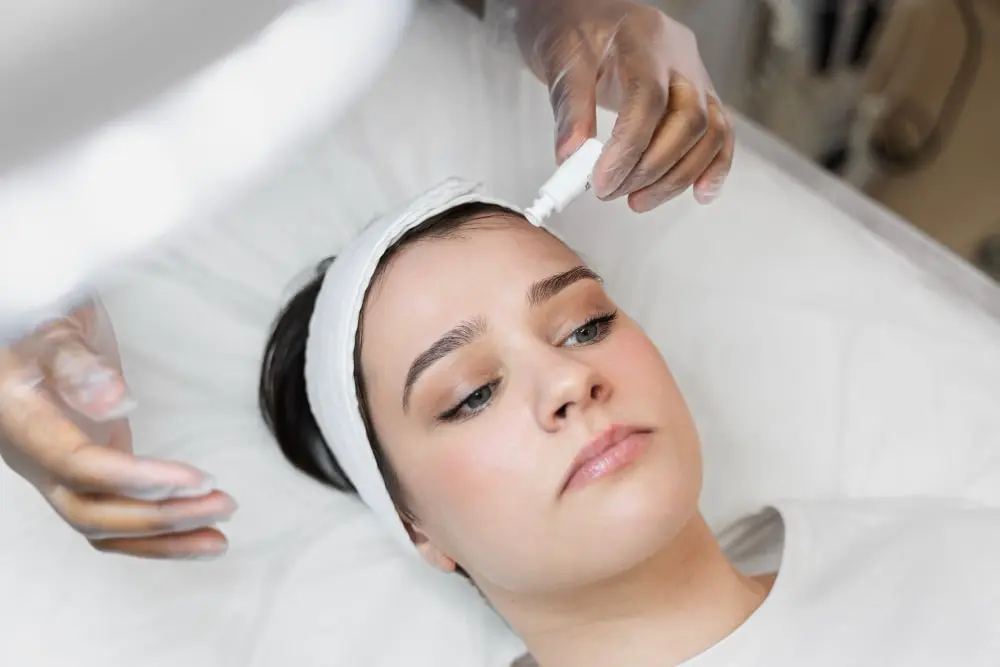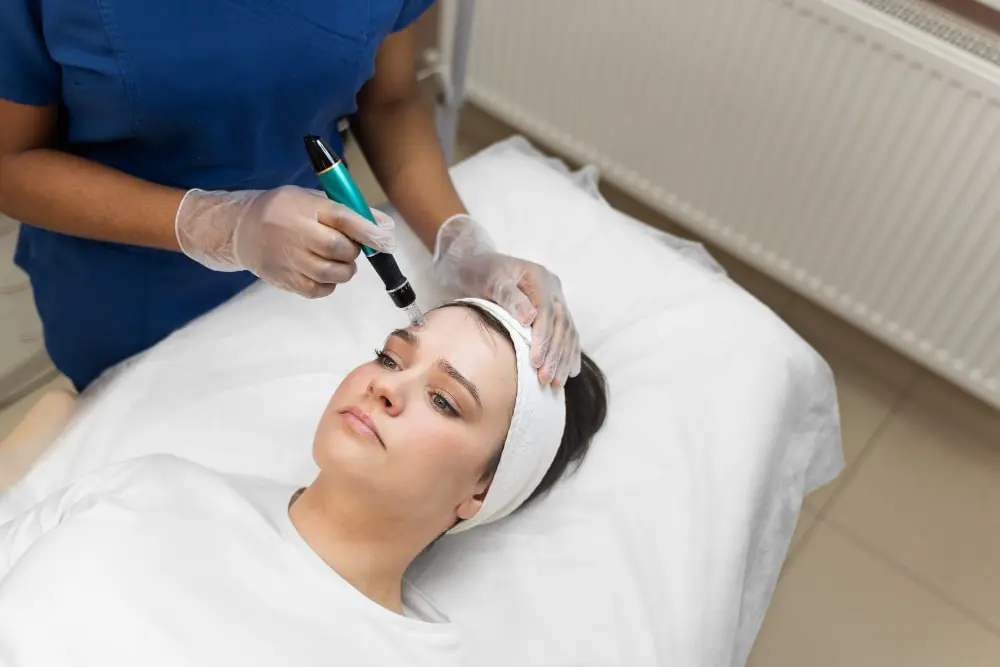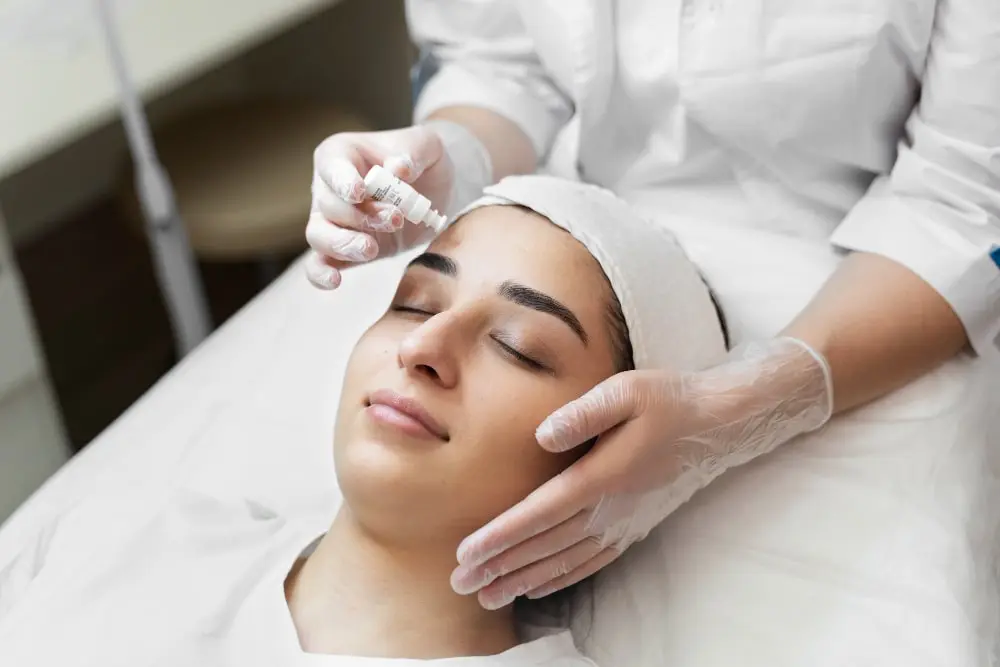Skincare treatments have advanced significantly, providing solutions for various skin concerns, from fine lines and acne scars to uneven texture skin tone and pigmentation. One of the most talked-about treatments today is microneedling, known for its skin-rejuvenating effects. But a common question for first-timers is, Does microneedling hurt?
Managing pain and ensuring comfort are critical parts of the process, so stay tuned and let’s dive with Eve On 21 into what you can expect during and after the procedure.
What is Microneedling in Adelaide?
Microneedling in Adelaide is a minimally invasive skin treatment that uses a device with fine needles to create tiny, controlled punctures on the skin’s surface. These micro-injuries stimulate the body’s natural healing process, promoting the production of collagen and elastin, which are essential for smoother, firmer skin.
Microneedling is commonly used to address:
- Fine lines and wrinkles
- Acne scarring
- Hyperpigmentation
- Uneven skin texture
- Enlarged pores
- Stretch marks
The idea is simple—by causing minor injuries to the same skin cells, the body is encouraged to heal itself, resulting in healthier, younger-looking skin. Yet, despite the promising benefits, many people still ask, does microneedling hurt?
Does Microneedling Hurt?
The quick answer is it varies. While needles may sound intimidating, the discomfort is usually minimal and manageable. Many people report a light scratching or prickling sensation, while others describe it as a mild sunburn-like feeling during and after the treatment. Several factors influence how much discomfort you may feel, including:
- Needle Depth: The deeper the needle penetrates, the more influential the treatment, but it can also be slightly more uncomfortable.
- Pain Tolerance: Everyone experiences pain differently, and some people naturally have a higher threshold for discomfort.
- Skin Sensitivity: Those with sensitive skin might feel more uncomfortable than those with a higher tolerance to external stimuli.
For most people, microneedling is not painful enough to deter them from the treatment, especially given its results. However, there are various ways to ensure the experience of cosmetic procedures remains as comfortable as possible.

Gentle Techniques for Comfort
Because pain tolerance differs among individuals, clinics typically use various strategies to make microneedling as pain-free as possible. Here’s how comfort is prioritised during every stage of the process.
Preparation for the Procedure
Comfort during microneedling starts with proper preparation. A few days before your appointment, avoiding sun exposure, harsh exfoliants, and products like retinoids that may make your skin more sensitive is generally advised.
One of the most common ways to ensure a comfortable experience is to apply numbing cream to the treatment area about 30 to 45 minutes before the procedure. This desensitises the skin, significantly reducing any pain you might feel when using the needles. Most patients feel little to no discomfort with topical numbing cream during the treatment.
During the Procedure
Once the skin is sufficiently numb, the microneedling device is passed over the treatment area. The device contains tiny needles that move up and down to puncture the skin in a controlled manner. This process is typically quick and lasts 20 to 30 minutes, depending on the size of the area being treated.
Modern microneedling devices use automated needle technology, which provides a more precise and gentle treatment. This reduces the risk of discomfort associated with manual pressure. Many patients report that while they feel a slight tingling sensation, it’s far from painful.
Post-Treatment Care
After microneedling, some mild discomfort is expected, though it usually feels more like tightness or warmth, similar to a light sunburn. The skin may be slightly red or swollen, but these effects typically subside within a day or two.
To enhance comfort post-treatment and ensure proper healing, here are a few essential aftercare tips:
- Hydration: A gentle, hydrating serum or moisturiser helps keep the skin calm and moisturised. Products with hyaluronic acid or aloe vera are great for soothing and nourishing the skin after microneedling.
- Sun Protection: After the procedure, it’s crucial to apply sunscreen regularly, as your skin will be more sensitive to the sun. A broad-spectrum sunscreen with SPF 30 or higher is recommended.
- Avoid Active Ingredients: For at least a week, avoid retinoids, acids, and other active ingredients to give your skin time to heal correctly.
- Cool Compresses: If you experience swelling or warmth, applying a cold compress can help reduce these symptoms and offer relief.

Comparing Microneedling Treatment to Other Treatments
Many wonder how the microneedling procedure compares to popular options like chemical peels, laser treatments, or microdermabrasion when considering skin treatments. Regarding discomfort, microneedling tends to be less painful and requires less downtime than more invasive procedures.
- Laser Treatments: Laser resurfacing can be highly effective. However, due to the intense heat that stimulates skin renewal, it often comes with more pain and an extended recovery period.
- Chemical Peels: Depending on the depth of the peel, the procedure can range from mildly irritating to quite uncomfortable, especially in the days following treatment.
- Microdermabrasion: This exfoliating treatment is relatively pain-free but doesn’t penetrate as deeply as microneedling, making it less effective for issues like deep scars or wrinkles.
Ultimately, microneedling offers an excellent balance between effectiveness and comfort, making it a popular choice for those looking to improve their skin without excessive pain or recovery time.
Conclusion
So, does microneedling hurt? The discomfort is minimal for most people, and the results far outweigh any slight tingling or scratching sensation during the procedure. With modern tools, numbing creams, and proper post-care, the microneedling process is designed to be as pain-free as possible. Any residual discomfort after the treatment is usually mild and short-lived, with proper care helping to speed up recovery.
If you’re concerned about pain or have specific questions about how microneedling may feel, it’s always a good idea to consult a qualified skincare professional. They can assess your skin, offer personalised advice, and make adjustments to ensure a comfortable and positive experience. For more information, contact us at 08 8490 3997.
Frequently Asked Questions(FAQs)
What Happens Immediately After Microneedling?
Immediately after microneedling, your skin will likely appear red and feel warm, much like a mild sunburn. Some people may experience slight swelling or tightness in the treated area, but this typically subsides within a few hours to a day. In some cases, it’s normal to see pinpoint bleeding, especially when deeper needle settings are used. Over the next few days, the skin might feel dry or flaky as it begins to heal and regenerate.
How Do I Know If Microneedling Worked?
You’ll notice subtle changes in your skin’s texture and tone within a week or so after a microneedling session. Early signs that microneedling is working include a brighter complexion, smoother skin, and reduced appearance of fine lines or scars. Full results may take a few months as collagen production ramps up. Improvements in deeper skin concerns like scars or wrinkles are more visible after multiple sessions.
How Often Does Microneedling Need To Be Done?
Microneedling treatments can be performed every 4 to 6 weeks, depending on your skin’s recovery rate and the specific issue. For general skin rejuvenation, 3 to 4 sessions are typically recommended, but for more stubborn concerns like deep acne scars, up to 6 sessions might be needed. After completing a treatment series, maintenance sessions every 3 to 6 months can help maintain results.
How Do You Know If Microneedling Is Right For You?
Microneedling suits various skin types and concerns, making it a versatile treatment. It’s safe and effective for fine lines, acne scars, hyperpigmentation, or textural issues. If you have relatively healthy skin and want a noninvasive way to improve your complexion, microneedling is a great option. However, if you have active acne, eczema, or skin infections, it’s best to consult a skin care professional to determine if microneedling is appropriate.
How Long Is The Healing Process Of Microneedling?
The healing process after microneedling is relatively quick. Most people experience redness and sensitivity for the first 24 to 48 hours. The redness subsides by day 3 or 4, and any flaking or dryness will typically diminish. The skin continues to heal and regenerate over the following weeks as collagen production increases, but you can generally return to your regular skincare routine and activities within 3 to 5 days.




